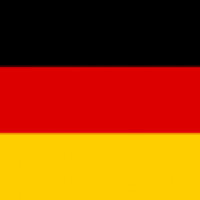Summary:
A German university institute developed a novel device and method for the diagnosis and treatment of hearing disorders. The technology is a miniaturized device which determines the activity of the half-cell channel connexin 26 (Cx26). Cx26 is a crucial protein for human hearing quality. The method enables a visualization of mutations, affecting the activity of the half-cell. The university is looking for collaboration partners under a license or commercial agreement with technical assistance.
Description:
A German university is active in the field of cochlear implants research. The institute's reseachers developed a novel, patent-pending approach for the diagnosis and treatment of hearing disorders.
The use of complex hearing implants, which has been common up to now, is associated with costly and lengthy treatments. So far, several attempts have been made to compensate hearing loss by the use of costly hearing implants. The offered technology pursues a different approach and focusses on the half-cell channel protein connexin 26 (Cx26) which is crucial for the human hearing.
The invention is a highly miniaturized device for activity analysis and the determination of the half-cell channel Cx26. Mutations in Cx26 highly affect the activity of the half-cell and can be visualized in parallel optical methods. Point mutations in Cx26 can lead to improperly positionized or nonfunctional channels. Certain mutations in Cx26 can also result in incorrect sequencing of the transport protein which can therefore degrade, representing a folding disease. Other point mutations result in altered channel functions. It is also possible that cellular stress can cause protein folding.
The aim of the novel approach is to correct corresponding losses of activity by chemical agents. In order to be able to evaluate the activity in the cell, a rapid optical test procedure is used in which the activity is made visible on the basis of the restored transport function. This provides starting points for the development of novel drugs that can halt or counteract hearing loss.
The technology can be primarily applied in the field of cochlear research and particularly for diagnostics and therapy planning targeting hearing disorders.
Currently, the university is looking for partners, interested in signing a commercial agreement with technical assistance. Possible partners could be for example (manufacturing) companies from the sector of medical devices/cochlear technology or any other companies, interested in the commercialisation of the novel approach.
Additionally, the university is looking for licencees, who are keen to introduce the patent-pending invention (patent applied for in Germany) to the market or integrate it into existing or new products. In this context, the university is looking for a company, who is experienced in introducing novel products and technologies to the market.
Type (e.g. company, R&D institution…), field of industry and Role of Partner Sought:
In order to introduce the innovation to the market the university is now looking for suitable companies who are interested in signing a license agreement. A possible partner could be a company dealing with medical devices and/or cochlear technologies. The sought partner could be a SME from the field of cochlear technologies, willing to integrate this pioneering approach into new or existing products.
Additionally, the institute is also looking for companies interested in a commercial agreement with technical assistance. In this context the university is interested to collaborate with suitable companies, who are keen to prepare the market entry of the innovation and possibly jointly further develop and improve the approach. The university is looking for an SME or larger company who is experienced in introducing novel technologies to the market.
Stage of Development:
Prototype available for demonstration
IPR Status:
Patent(s) applied for but not yet granted
External code:
TODE20210802002








